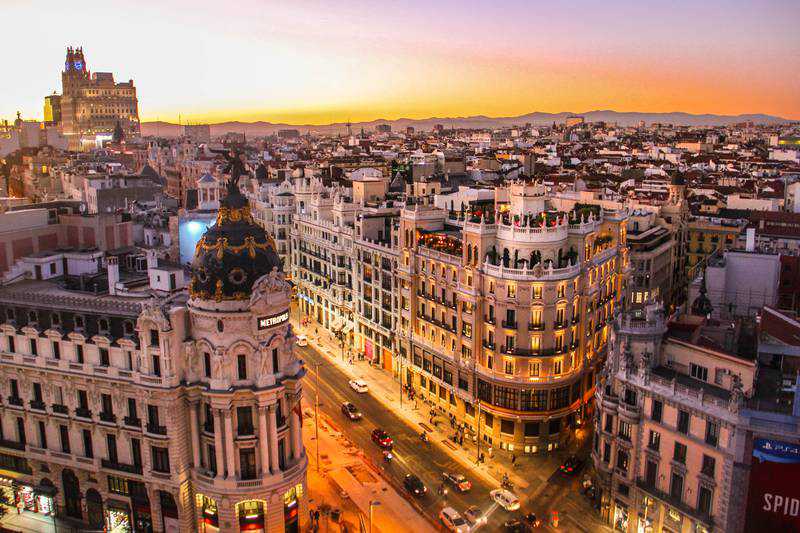Why a visit to Sant Antoni should be on every Barcelona travel itinerary

La Sagrada Familia, La Rambla and the Picasso Museum might be among the first attractions that come to mind when planning a trip to Barcelona, but there’s a little-known area away from the old-world vibes of the Gothic Quarter and the upmarket stylings of Ciutat Vella that should also be on your Catalonia bucket list. It’s called Sant Antoni.
This traditionally working-class neighbourhood is located in the central district of L’Eixample. It’s within walking distance of many of Barcelona’s major tourist attractions, and very close to lively Poble Sec and the multicultural melting pot that is El Raval.
Despite its recent gentrification and local fears that tourists may begin to overrun the area, Sant Antoni still harks back to a bygone era, when neighbours would gather in the sunshine in central courtyards and squares. The area’s streets feature a friendliness that’s perhaps lacking in the city's major tourist hot spots, and the surrounding architecture, much of which dates back to the early 1900s if not decades before, keeps it grounded.
Stylish restaurants vie for space alongside down-to-earth cafes and hipster boutiques sidle up to cosy thrift shops and speciality gift stores. Yet it never feels crowded, thanks to its smaller population, vast thoroughfares and pedestrianised zones.
One of the area’s main attractions is the Mercat de Sant Antoni, or Sant Antoni Market, which was revitalised in 2018. In May that year, the 135-year-old marketplace reopened after a nine-year hiatus and an €80 million ($92.8m) renovation that came as part of a citywide market regeneration plan, aiming to breathe new life into Barcelona’s lesser-known barris.
The Mercat de Sant Antoni was constructed in 1882 and designed by Antoni Rovira i Trias. The Neoclassical building, made using wrought iron and metal, is shaped like a Greek cross and is typical of markets of that era. To this day, it covers an entire block, and consists of three main arms, including a food zone with 52 stalls, and a flea market with 95 stalls. The last block is one of Europe’s largest open-air book markets, which comes alive every Sunday when 78 tables laden with new and secondhand tomes, novels, comics, stamps and other collectibles surround the structure.
Other highlights in the area include Yes Future, one of Barcelona’s most famous zero-waste supermarkets, where everything from vinegar to kombucha is available on tap, and shoppers can pick up locally made and farmed treats from the deli, such as kimchi-stuffed olives or spicy cashew cheese.
Ask any local, and they’ll know Sant Antoni as the place to dine out. In particular, Calle Parlament is home to some of the area’s hippest restaurants, from popular brunch spot Federal Cafe to coffee-and-art hangout Cafe Cometa. Elsewhere, find great Spanish tapas at Els Sortidors del Parlament and Bar Ramon. Or discover more multicultural options at Manso Pizzeria, La Golosa Vegan Vurger and the whimsically-styled Tickets, a contemporary tapas restaurant that’s been the recipient of a Michelin star (NB this spot is temporarily closed owing to the pandemic).
As for where to stay, one of the best ways to experience Sant Antoni as the locals do, is by booking an Airbnb or homestay in one of the many old buildings that have been turned into stylish apartments. It’s worth mentioning that as of August 6, short-term private-room rentals are no longer allowed in Barcelona, so you will need to book an entire flat or house.
There are also numerous well-regarded hotels and serviced apartments in the area, including Hotel Market which is located next to the Mercat de Sant Antoni, with chic, modern rooms boasting rain showers, dark wooden beams and large windows from which to enjoy the view. The centrally located four-star Weflating Suites Sant Antoni Market offers serviced two and three-bedroom apartments, all of which come with balconies.
Previous Story
- ‘Expat Bangladeshis in Spain contribute massively to EU...
- Spain to Consider Bilateral Deals on Tourism, Official...
- Atlas Air freighter lifts 110 tonnes of transhipped...
- Leather goods, footwear producers downhearted by decline in...
- Coronaviurs pandemic signals troubles for RMG sector
- Participation jumps by 57% at Bangladesh Denim Expo
- Bangladesh Leather Sector Recovers From Two-Year Slump
- Leading business schools 2019